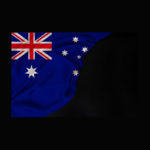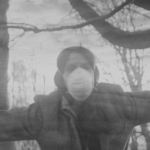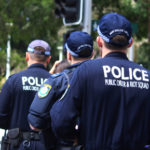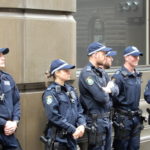The Interlinked Crises of COVID and Climate: An Interview with Health Professor Ro McFarlane
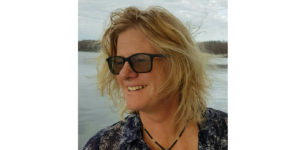
A different aspect within many Australian urban centres over the last summer was the site of locals wearing face masks on city streets due to the intense smoke pollution rolling in from the bushfires that were ravaging the eastern seaboard.
And in a somewhat bizarre twist, just weeks after the last masks were cast to the side, Australians were once again reaching for this protective gear to reduce their chances of catching and spreading the potentially fatal and highly contagious COVID-19 disease.
Of course, masks aren’t the only link between the bushfire catastrophe and the current pandemic. There’s the timing. One unprecedented disaster coming after the other. And this then leads us back to another anomaly, which was the recent devastating water shortage in south eastern Australia.
So, moving deniers to the side, the obvious link between the fire and water crises is the climate emergency. And scientists and health experts are now pointing to this being the underlying cause of the COVID-19 pandemic – that is, changing climate and the fossil fuel economies that cause it.
Vulnerable systems, vulnerable people
University of Canberra Assistant Professor of Public Health Ro McFarlane was one of three academics that recently published an article in the Conversation titled, Coronavirus Is a Wake-Up Call: Our War With the Environment Is Leading to Pandemics.
Within it, McFarlane and co posit that while the climate crisis and COVID-19 may at first appear unrelated, they’re actually “deeply connected” by humanity’s “unwillingness to respect the interdependence” between itself, “other animal species and the natural world more generally”.
Similar to the likely source of the novel coronavirus, three out of four new infectious diseases affecting humans come from animals. And the underlying causes include loss of habitat and trade in wildlife, which are further exacerbated by the effects of a warming and drying planet.
“It’s the sort of pandemic experts have been warning will arise from environmental degradation,” the authors write, and then go on to note that changing climate is weakening our human health, which in turn, makes people more susceptible to a pandemic like COVID-19.
Time to discuss the future
But, according to Dr McFarlane, it’s not like humanity hasn’t taken collective stock of what’s taking place and thought about a direction that would prevent human economies forging ahead to a time where our urban centres are either too dry or too submerged or too diseased to inhabit.
She points to the 17 key aims that make up the UN Sustainable Development Goals. This list of goals and targets was established in 2015, with the intent of achieving them by 2030. And McFarlane believes these might help to shape our vision of the future, as our past visions are fast expiring.
Sydney Criminal Lawyers spoke to Dr Ro McFarlane about placing the COVID-19 pandemic in the context of changing climate, how the health of the most vulnerable is intimately linked to the rest of humanity, and why there’s no real choice but to envision new sustainable global health paths.
Firstly, for us in Australia, the COVID-19 crisis comes straight after the bushfire catastrophe. And that followed the greatest water shortage crisis in living memory in south eastern Australia.
Dr McFarlane, you see a link between these crises. Can you explain what that is?
For people looking for direct links with climate change, until we understand exactly what the host of COVID-19 is, we can only make general claims.
But, 96 percent and over viral similarity points to it being a bat. And we’ve been seeing species move around the planet in response to climate change. This and accelerating habitat loss has pushed different species together in new combinations, and viruses love opportunities to jump between species.
We’re seeing a shift in species like mosquitos that carry diseases like malaria and dengue. There are environmental organisms that like increased flooding and warm water such as the bacteria that causes cholera.
There are rodents moving the distribution of hantaviruses, and we’ve seen this happen with wildlife diseases, also. The collapse of wildlife populations like caribou in the northern US and Canada is driven by parasites expanding into high latitudes and changing their lifecycles.
So, diseases are moving and shifting. And hosts are moving and shifting.
The point that we made in that article was to note that COVID-19 is a respiratory disease.
The extraordinary scale of the bushfires we recently had in Australia mustn’t be forgotten. About 20 percent of Australia’s forests were burnt, and we may have lost a billion animals.
From a human health point of view, we’ve accounted for about 417 premature deaths, and another 3,000 hospitalisations with cardiorespiratory problems. There was another 1,000 plus deaths that were asthma-related, as well as 33 direct deaths. We don’t yet know the long-term impacts.
We know that the people who are most likely to die from COVID-19 are people with pre-existing – particularly cardiorespiratory – diseases.
And we know that air pollution accounts for about a third of heart disease, stroke and lung cancer, globally. So, there’s certainly a synergy there that we need to be really careful of.
Most air pollution is produced by fossil fuel burning, and that is the major driver of climate change. It is also produced from fires, both in the bush and in the home.
A huge proportion of the global population burns biomass indoors and inhales smoke, which is a leading cause of respiratory and heart disease worldwide.
Then obviously there’s the bushfires. It’s not just our fires in Australia, but those in the Amazon last year, the fires in Indonesia, and so on. This is undoubtedly linked to the heating and drying of the planet.
We need to be cognisant of this when we talk about human health, because we are accumulating problems in a way that means we need to think differently in order to really address the underlying causes.
That’s a move from being just reactive – which is the phase we are in at the moment with COVID-19 – to really understanding what we can do to stop these problems occurring in the first place and to limit their impact.
To start with, the emergence of this virus is part of something that we’ve seen increasingly over the last decades with novel viruses coming from wildlife.
So, in making that link, what about someone who rebukes the idea, by saying this isn’t the first pandemic that people have faced, and many of these occurred prior to any concerns about climate?
The Spanish Flu happened a century ago, while the Black Death happened in the 1300s. How is the current COVID-19 crisis different from those pandemics?
One of the differences is that there’s many more of us, and there is the crisis of biodiversity loss and much more global mobility. But, the latter was a factor in the Spanish Flu as well.
It came after the First World War, with the people dispersing back from the battlefields of Europe. That aided the spread of Spanish Influenza around the globe.
And that pandemic still overshadows what we’ve seen to date with COVID. A third of the global population was infected, although there were only 1.5 billion people then. And there were almost 50 million deaths, mostly in the space of about a 12 month period.
The Black Death is a not dissimilar story, as it spread on the back of trade. The plague bacteria was transmitted by fleas from rodents, linked back to the increase in trade with the East.
Climate driven pulses of host rodents may explain the pulses of new outbreaks in Europe that ultimately caused the death of a quarter of its population. And the armoury to deal with this then was quarantine, isolation, decontamination of goods.
The issue is about frequency of new diseases. We had our first big burst of infectious diseases from animals to humans in the Neolithic Age, in early agrarian communities.
For the first time, we had crowds of people living in close contact with each other and with newly domesticated animals. Diseases like measles and TB we relate back to that period of time.
But, it’s the rate of new diseases from animals that’s the remarkable aspect of the last decades.
Like SARS, the bird flu and Ebola?
Yes. So, bird flu is a mutation of a very changeable virus – the influenza virus – which principally infects poultry, pigs and humans, although, it does affect other species. It changes regularly and so we have Spanish Influenza, Swine flu, and so on.
What we started to see in the 1970s was a shift. We had thought we knew everything there was to know about infectious diseases, and we had knocked off smallpox in the middle of the twentieth century. But, then we started to see these new diseases.
Ebola was mid-1970s. Then HIV/AIDS hit in the mid-80s. And then we got a succession of bat-origin diseases, which includes the Hendra virus in Australia, Nipah, Ebola and SARS. There are many less significant diseases jumping across from wildlife too.
We’ve really ramped up our transformation of the planet from the mid-twentieth century onwards, biodiversity loss has accelerated, and we’ve been pushing people and wildlife together.
This is similar to when we first brought crowds of people and the number of domestic animals together. It’s novel groupings.
On top of all this, there are much more of us, and we’re much more connected, and we move animals. So, when you’ve got small groups of people subsisting on eating bush meat that is one thing, but a massive trade that moves wildlife all around the globe is another.
So, we’ve set up new mechanisms by which we are intensifying the opportunities for viruses, parasites and bacteria to transmit from wildlife to humans.
When Ebola first emerged in east Africa, it was in isolated communities. Military and political regimes were able to cordon off outbreaks so although there was very high mortality locally, the virus died out.
But, when that same situation occurred in west Africa, where you had civil war, the lack of well-functioning government and infrastructure, and there was very delayed identification of that virus being Ebola. So, it spread.
It’s that human element on top of the emergence of these new diseases, which lends itself to the sorts of disasters that we’re now seeing.
We know that COVID-19 emerged at the time of the Spring Festival in China, when people were moving. The human elements of timing, location and response are critical parts of the story.
These are all elements that come together in perfect storms, but some things could be controlled.
The link between the way our economies operate and these diseases that skip from animals to humans is a focus within the emerging field of planetary health, which acknowledges the interdependence between human health and that of nature.
You posit that perceiving outbreaks like COVID-19 through this lens, then calls for more holistic solutions. Can you expand on that? And where do vulnerable people fit into this discussion?
In this sort of crisis, we have to do what we are doing currently. We need decisive action. And getting that right has obviously got implications for not just people’s health, but their livelihoods: for national and global wellbeing.
What’s also important is that we take the time to think about what things are going to look like as we come out of this, and what lessons are learnt.
We’ve got vulnerable people everywhere: unemployed, isolated, high risk, under resourced and detained. Currently, we’re thinking about those people, as their health impacts our health.
Their livelihoods and their wellbeing are all interlinked with ours. That should be the starting point to thinking about all of this.
There are multiple reasons why we’ve got vulnerable people and why we’ve got people unable to access healthcare.
Then there’s environmental degradation that’s giving us underlying respiratory diseases, along with the emergence of viruses that we need to factor into this sort of thinking.
COVID-19 reminds us why universal access to healthcare is essential. It has been on the global wish list for quite a while, but progress is slow.
We know that our health is limited by the poor health of our most vulnerable. Health inequity is a real target for health organisations for this reason. That includes people who have been marginalised for all sorts of reasons, whether that be race, gender, sexuality or disability.
Then you can think about economies. We know that we need to decouple economies from human misery and environmental destruction.
We’re increasingly hearing about a universal wage, and even about getting those people who were previously unemployed and living below the poverty line onto a higher income allowance, like JobSeeker.
It’s a push to get these people into better positions for our common good. And there’s a global analogy here, because we’ve come to understand that our current economies keep some people poor, so that some people can profit.
That’s played out in the developing world, but even in developed economies. And we’re seeing this growing inequality that’s frankly alarming.
This is the time to rethink this. And you can see that some governments around the world are moving in the direction of addressing these issues.
Growing inequality is socially unsustainable. And we’ve seen countries unravel because of this sort of inequality, and none of us want to go there.
We’re also increasingly talking about decoupling economies from environmental destruction. Not necessarily so much in Australia, but certainly in Europe it’s been much more pursued.
Climate and environment are so critical and the evidence for their decline being linked to declines in health, or the need to have them in the healthiest or most stable situation for us to pursue good health, is very clear.
That doesn’t need to be debated, but it does need to be urgently addressed. And readers will probably realise that addressing all these different agendas starts to sound like the United Nations Sustainable Development Goals (SDG).
These are 17 goals and 169 targets. They’ve been agreed to by 192 countries, including Australia. That means that there’s a framework, common dialogue or vision that’s been agreed to by Australia – and effectively by all countries.
And while it’s not overly prescriptive, it helps to shape the conversation about where we want to go to for a sustainable, desirable and equitable future.
The goals address everything from population to hunger, poverty to gender equality, climate and biodiversity, decent jobs, economic growth, and circular economies.
In Australia, the SDGs have been the responsibility of DFAT and PMC. We can see an echo of this within our foreign aid policy, and within some of the work within Indigenous communities.
But, the essential task of countries with regard to the Sustainable Development Goals is for them to become the domestic agenda.
City councils, like Sydney, have taken this up, and you can see it within that council’s accountability framework.
Various other councils have done similar work around it, however not too many. And none of our states have factored them in and that’s where most health and environmental responsibility lies.
Australia, as a whole, usually hits around the top with indices, such as health. But, we’ve actually been dropping when it comes to sustainable development. So, this is an opportunity to look into these goals and look at how different aspects can be developed.
Dr McFarlane, governments that are currently putting necessary COVID-19 preventative measures into place, are the same ones that people have been rallying against in regard to their fossil-fuel agendas.
Do you think there’s a danger that they will feel vindicated if they come through this crisis in a strong position, and then simply continue on with business as usual?
Do you mean that governments could be vindicated by the fact that they made all this money from fossil fuels and that led to ensuring that we got through the health crisis and provided stimulus packages?
No. What I mean is if we look at the Morrison government, it wasn’t doing so well as we came out of the bushfire crisis and right before COVID struck, but now it’s had to step up and is attempting to guide the country through a health emergency.
But, this government has a heavy fossil fuel agenda. So, when it comes through this crisis and if it can show that it’s done well, it may simply be emboldened to continue on with its fossil fuel agenda as before.
The fossil fuel agenda is causing climate change and this cannot be allowed to be overshadowed by this current disaster.
We have to understand that we are into an era where we have accumulating disasters. But for some rain we could have had coronavirus and bushfires and air pollution concurrently.
So, we’re running out of water, more bushfires and now a pandemic. These are not isolated events, as I’ve been explaining.
If we come out of this with a reinvestment in coal mines, aviation or deforestation, we’ve possibly not understood what’s going on.
This is a shock to the system. And it’s an opportunity for these discussions to change directions. As I have pointed out, we are signatory to a vision of a change of direction in the UN Sustainable Development Goals. We should start with that.
These are opportunities. The Morrison government has stepped up and shown it can be decisive with a serious health risk. Climate change is another real health risk. So is biodiversity loss.
So, I encourage the government to continue on with its decisive action to steer us out of that next disaster.
We’ve had three wake-up calls just this year in Australia. And it would be the height of stupidity for us not to really take stock of what these wake-up calls are telling us.


